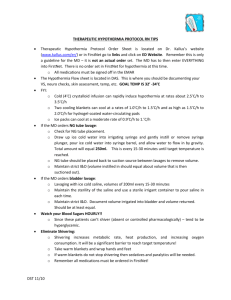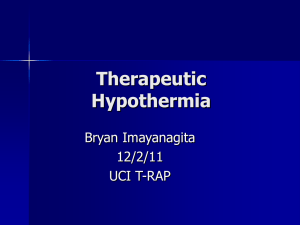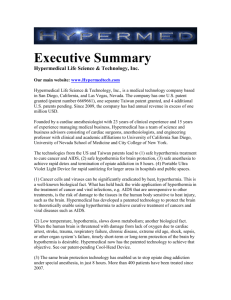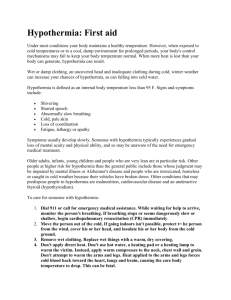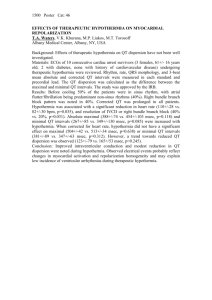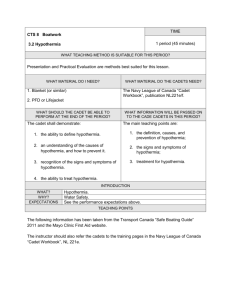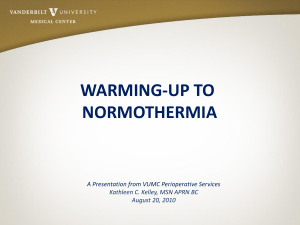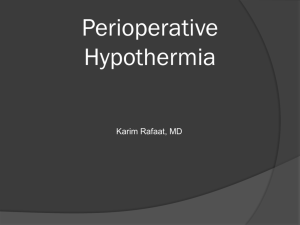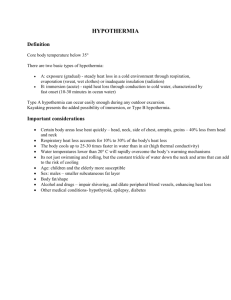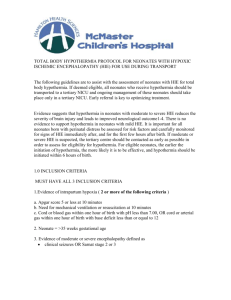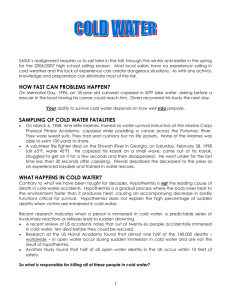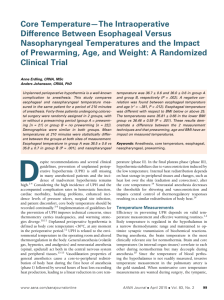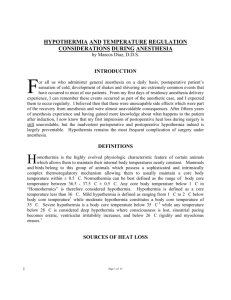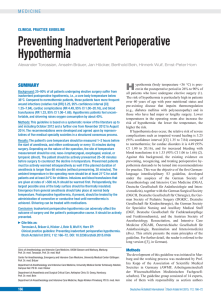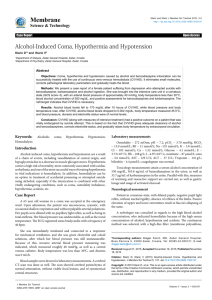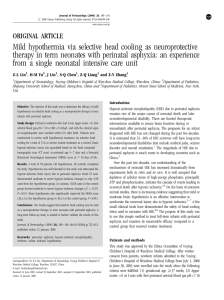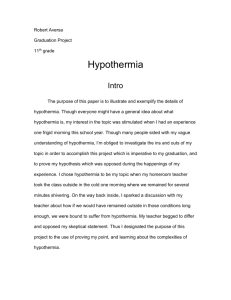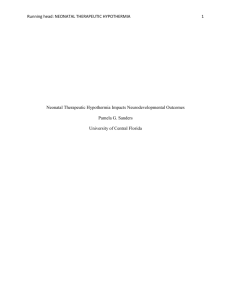Hypothermia Anesthesia Neonats
advertisement
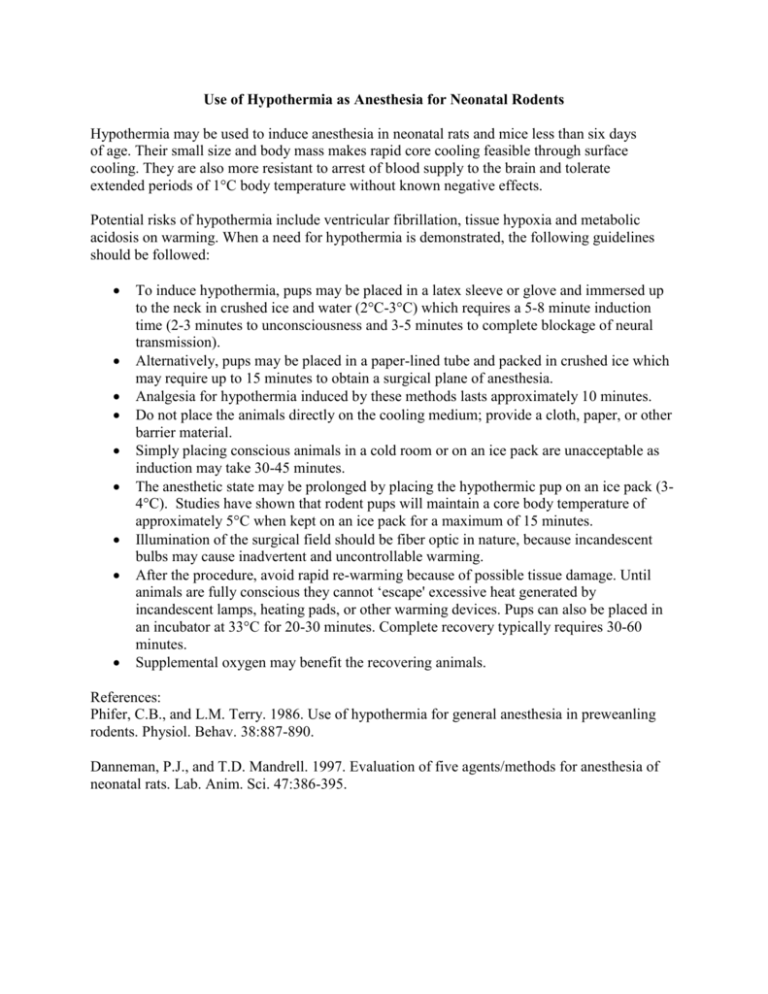
Use of Hypothermia as Anesthesia for Neonatal Rodents Hypothermia may be used to induce anesthesia in neonatal rats and mice less than six days of age. Their small size and body mass makes rapid core cooling feasible through surface cooling. They are also more resistant to arrest of blood supply to the brain and tolerate extended periods of 1°C body temperature without known negative effects. Potential risks of hypothermia include ventricular fibrillation, tissue hypoxia and metabolic acidosis on warming. When a need for hypothermia is demonstrated, the following guidelines should be followed: To induce hypothermia, pups may be placed in a latex sleeve or glove and immersed up to the neck in crushed ice and water (2°C-3°C) which requires a 5-8 minute induction time (2-3 minutes to unconsciousness and 3-5 minutes to complete blockage of neural transmission). Alternatively, pups may be placed in a paper-lined tube and packed in crushed ice which may require up to 15 minutes to obtain a surgical plane of anesthesia. Analgesia for hypothermia induced by these methods lasts approximately 10 minutes. Do not place the animals directly on the cooling medium; provide a cloth, paper, or other barrier material. Simply placing conscious animals in a cold room or on an ice pack are unacceptable as induction may take 30-45 minutes. The anesthetic state may be prolonged by placing the hypothermic pup on an ice pack (34°C). Studies have shown that rodent pups will maintain a core body temperature of approximately 5°C when kept on an ice pack for a maximum of 15 minutes. Illumination of the surgical field should be fiber optic in nature, because incandescent bulbs may cause inadvertent and uncontrollable warming. After the procedure, avoid rapid re-warming because of possible tissue damage. Until animals are fully conscious they cannot ‘escape' excessive heat generated by incandescent lamps, heating pads, or other warming devices. Pups can also be placed in an incubator at 33°C for 20-30 minutes. Complete recovery typically requires 30-60 minutes. Supplemental oxygen may benefit the recovering animals. References: Phifer, C.B., and L.M. Terry. 1986. Use of hypothermia for general anesthesia in preweanling rodents. Physiol. Behav. 38:887-890. Danneman, P.J., and T.D. Mandrell. 1997. Evaluation of five agents/methods for anesthesia of neonatal rats. Lab. Anim. Sci. 47:386-395.

